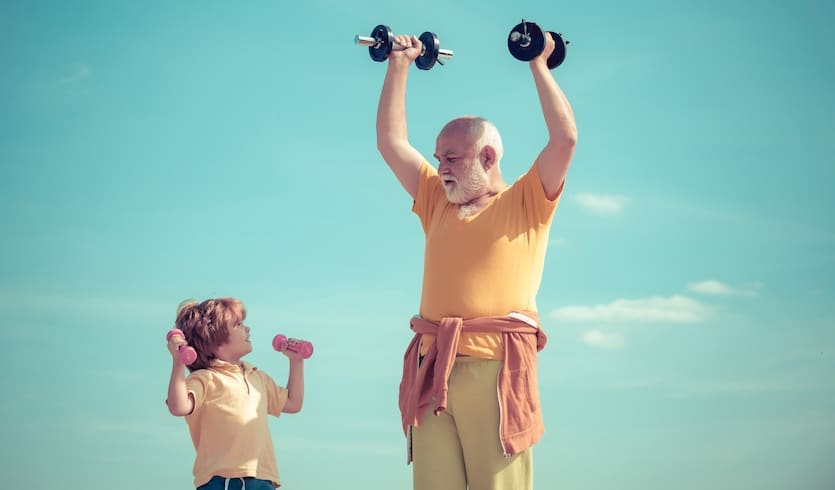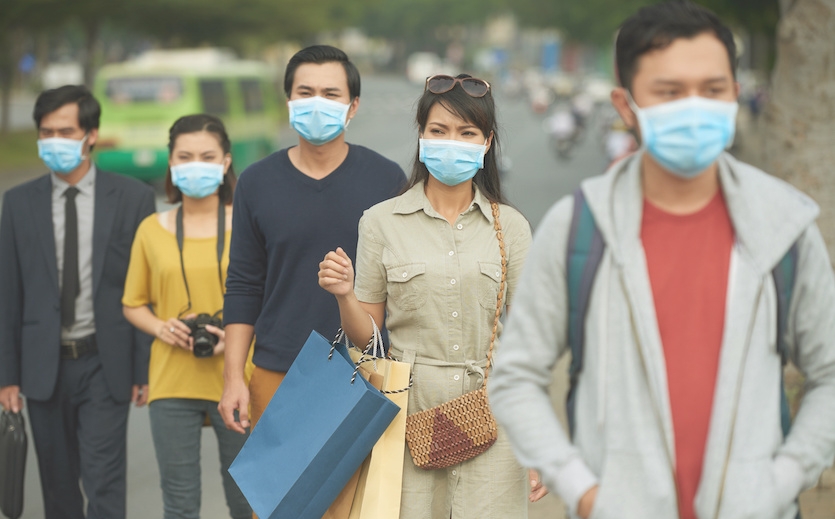In the hustle and hurry of today’s world it can be difficult to prioritize yourself—especially when it comes to your mental health. Between career demands, family and relationship responsibilities, and everything else life throws at you, there’s probably a lot on your plate. And there’s nothing wrong with that if—and this is a big if—you’re taking the time to care for your mental health, too.
Many workplaces have started to notice over-stressed employees aren’t operating at their best. So they have incorporated “mental health” or “wellness” days into company leave policies and monthly schedules. While this is a great practice, there are usually only a handful of such days scattered throughout the year.
But mental health should be a daily priority.
Fortunately, you don’t have to choose between keeping up with the demands of your life or prioritizing your mental wellbeing. You can do both. All it takes is a little practice and proactive self-care. Read on for mental health tips you can use no matter how busy your schedule is!
Start at the Source: Identifying and Managing Stress
Ah, stress, that all-too-familiar feeling. Every person has experienced it at one time or another—probably many, many times. A small amount of day-to-day stress is inevitable, and, for most people, perfectly manageable. When stress piles up, however, it can start to take a toll on your mental—and physical—health. That’s why stress management is a crucial element of your mental wellness each day.
According to a recent poll conducted by the American Psychological Association, stress is on the rise among adults in the United States. And the problem is a global one, too. But many adults can’t point to an exact cause of their stress. Usually, however, stress can be traced to one common denominator: time. More specifically, not having enough of it. After all, who hasn’t felt like their responsibilities pull them in a thousand different directions?
One study suggests this feeling doesn’t actually stem from running out of hours in a day. Rather, the stress many people feel from their daily responsibilities arises from “emotional conflicts” between the various tasks.
Imagine, for instance, you take some “me time”—an hour to pursue a hobby, read a book, or take a nap. There’s a good chance that a small amount of guilt will accompany that activity—guilt over not being “productive” or about putting off other tasks. The guilt creates an emotional conflict, which can lead you to experience higher levels of stress than you otherwise would experience. In other words, even if you have the time for self-care, you may feel like you don’t.
How can you eliminate some of that guilt surrounding self-care, and, in turn, the stress that comes from it? As is so often the case, it’s all about mindfulness.
Slow down and take a moment between each task to remind yourself why you’re doing it. Whether it’s a work project, decompression time, or cooking dinner, it’s important to acknowledge why the task is worth your time. So before launching into that next to-do list item, take a few deep breaths and think about the why.
10 Mental Health Tips for Prioritizing and Practicing Self-Care on a Busy Schedule
You’ve learned to avoid the guilt—and stress—that can arise as you try to fit self-care into your schedule. Now discover what self-care looks like on the go. Most of these mental health tips take 30 minutes or less and can be integrated into a workday. Because, let’s face it, you might not always have the time (or funds) for a 90-minute deep-tissue massage.
- Establish routines and stick to them: Good sleep, full and nutritious meals, as well as exercise are just a few lifestyle elements that can elevate your mental health and mood on a day-to-day basis. So what’s the catch? To really see the benefits of these practices, you need consistency. And consistency requires a routine.
Whether it’s cycling to work each morning or a strict bedtime, try to incorporate habits into your daily routine that promote consistent sleep (at least seven hours a night), some form of exercise, and nutritious eating. That means if you decide to meal prep for the week on Sundays, stick to it! These daily and weekly routines will give your life structure you can lean on for support when life gets busy. - Find time for exercise: The benefits of exercise sometimes seem too good to be true, but it really is great for both physical and mental health. You’re probably familiar with the physical benefits of daily exercise, but did you know that 30 minutes of exercise each day can also elevate your mood, reduce stress, and decrease anxiety levels?
And this doesn’t necessarily mean 30 minutes of hard, sweat-inducing cardio. Daily exercise can be as simple as walking or cycling to work in the morning or using a treadmill desk. There are even office-friendly exercise bikes if you want to be really creative with it! - Practice mindfulness: If you’ve ever thought about trying meditation but written it off as too involved or time-intensive, mindfulness might be just the thing for you. Mindfulness—the practice of being mindful— means creating awareness of the present moment. The best part? It doesn’t matter which moment you choose—you can bring mindfulness to any activity or task.
The first step is controlling your breathing. Close your eyes and start breathing in a slow, controlled cadence. Try to focus on the sensation of the air filling your lungs. When you open your eyes, bring that awareness to whatever you are doing. If you’re eating, pay attention to the sensations and flavors each bite brings. If you’re putting the final touches on your presentation for tomorrow, make every additional note or slide intentional. - Try progressive relaxation: There’s a common misconception that meditation requires large chunks of uninterrupted time and a designated space. Enter progressive relaxation, also known as progressive muscle relaxation (or PMR). All you need for PMR is 10-15 minutes and a place to lie down. (If you can turn the lights out, that’s an added bonus.)
During progressive muscle relaxation, you’ll do exactly as the name suggests: relax each muscle group in turn. Starting with your feet, clench the muscles as tight as you can, hold it, and then release. As you release, exhale. To complete the process, you will repeat this cycle for each muscle group, moving gradually up your body. The practice can be used to rest the body and relieve stress and anxiety. - Focus on the positive: You’ve probably heard the phrase ‘You are what you eat.’ But when it comes to mental health, often you are what you think. So try to keep your thoughts positive! If there’s a conversation you’re dreading, focus on the sense of accomplishment you’ll feel afterwards. Stuck on a frustrating work task? Look at it as an opportunity to learn and develop a new skill.
- Keep a journal: Journaling feels like one of the best kept secrets of adulthood. Which is to say it’s shocking more people aren’t keeping a journal. Your journal can be whatever you want it to be. If you’re trying to keep your thoughts positive, a gratitude diary could be just what you need to help you focus on the good. Or maybe you need a space to vent, work through your thoughts, or ramble about your day. A journal is good for all of it. The act of writing can be cathartic and help you release negative thoughts and emotions you have accumulated during the day.
- Take advantage of telehealth: When it comes to managing your mental health, there’s nobody more qualified to help than a licensed professional. Unfortunately, not everyone has time for therapy. Here’s the good news: telehealth and virtual therapy options are widely available, so it’s never been easier to find a therapist to fit your schedule. If you feel like you could benefit from the help of a professional, don’t let the thought of adding another commute to your workweek deter you. We live in a digital world—you might as well take advantage of it.
- Put the phone (or laptop) away: If you’re old enough to remember a time when you didn’t always have a phone and computer in your pocket, you probably wax nostalgic for those days occasionally. While smartphones, laptops, and other devices are incredibly useful and convenient, they have drawbacks. Whether it’s fighting off the temptation to tune into your work email or Slack channel at the dinner table or browsing social media in bed, there’s a good chance your devices have worked their way into nearly every part of your life. This can increase the stress you feel from work, generate FOMO (fear of missing out), and generally affect your mental health for the worse.
So consider unplugging for a bit. Turn the devices off at bedtime. Or leave them at home for your evening walk. A little bit of time away from the virtual world might be the break you didn’t know you needed.
- Make “me time” non-negotiable: No matter your age or occupation, it’s important that you make time in your schedule for yourself every day. This doesn’t have to be an elaborate activity. “Me time” could be simply cooking dinner. Or going for a fifteen-minute walk. Or painting a model airplane. It doesn’t matter what you’re doing if you want to be doing it.
- Take a day off: This last one isn’t always possible, but if you have the opportunity or option, consider taking a day off. Many employers offer mental health days, but if yours doesn’t, consider calling in sick or taking a vacation day. Gift yourself the time to go for a hike, catch up with a friend, or work through the stacks of dishes that have been piling up. Whatever you end up doing, a break from work can provide a much-needed breath of fresh air—literally and figuratively.
References
https://www.sciencedaily.com/releases/2015/02/150225094321.htm
https://www.goodtherapy.org/blog/study-explores-how-busy-schedules-affect-well-being-0226151
https://mhanational.org/31-tips-boost-your-mental-health
https://www.mentalhealthfirstaid.org/2019/08/how-to-practice-self-care-on-a-busy-schedule/
https://www.verywellmind.com/how-the-glorification-of-busyness-impacts-our-well-being-4175360
https://idontmind.com/journal/6-mental-health-habits-for-your-busy-schedule
https://crossroadshealth.org/prioritizing-mental-wellness-in-different-parts-of-your-life/
https://www.verywellmind.com/when-and-how-to-take-a-mental-health-day-3144754
https://www.apa.org/news/press/releases/stress/2022/march-2022-survival-mode
























